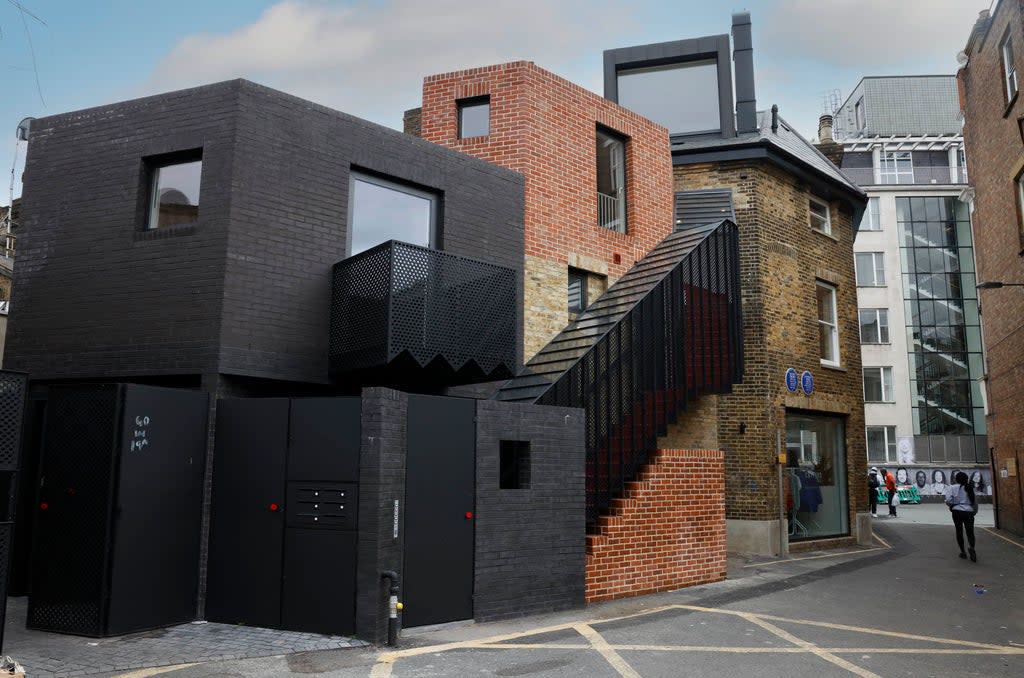Inside the ingenious small-space rental flats kickstarting Catford’s regeneration — with 27,000 cats

According to many reliable sources, the area of Catford’s name originates from its medieval association with cattle, rather than cats. And yet, in the modern era the south-east London town is cat-mad, with its famous giant fibreglass cat above the entrance to the shopping centre acting as the area’s mascot.
A similarly feline tribute can be found in a new block of five flats, one of the first steps in the 10 to 15-year regeneration of the area, which boasts 27,620 cats throughout the building’s internal and external decoration.
Japanese architect Taro Tsuruta was commissioned by the Catford Regeneration Partnership Ltd — part of Lewisham council — to build the apartments for private rental, the income from which will go back into the regeneration project.
There is also a commercial unit in the ground floor and new basement, currently occupied by the council-run House of Catford that sells locally made products for charity.
The council wanted the project to provide a showcase for future developers to get a sense of the design quality that is possible and expected by the borough, described by Tsuruta as a “pre-regeneration project”.
“The brief was catalyst, quite abstract but we knew we had to do something different, unique. So we used the cat motif around 27,000 times throughout the building because people love it for its physicality, it makes people smile,” he says.
The flats were built on a small infill site on Catford Broadway in a pair of refurbished and extended terraced houses, with an alleyway alongside also transformed into a wider and more appealing pedestrian route.
One major challenge Tsuruta faced was finding the space to build enough units to make the project financially viable. There was a clear way of building four apartments but one more was needed to make it work.

Tsuruta’s solution was an external staircase, meaning the strip of land running alongside the building needed to be bought too — once the owner had been found.
Materials were also kept simple and accessible, with oiled plywood, plain white tiles and vinyl flooring inexpensively sourced at builders’ merchants.
The contemporary design look comes from the bespoke touches, including the added cats, which are etched into cupboard doors, cast into concrete supporting beams, seen in the form of red door handles and coat hooks, and punched out of the metalwork on the staircase and balcony.
The furniture was made using digital fabrication, a more cost-effective way of achieving the stylish, high-quality look the practice is known for.
Space-saving internal staircases to mezzanine sleeping areas, specially built storage beds, cleverly designed cupboards and work-from-home desks built in to tiny nooks all maximise every inch of space.
“Our contractor went to a lot of effort with the laser cutting. It was too expensive to produce in the UK, they were Polish so they went to Poland and brought it back by car,” says Tsuruta. “None of it’s off the shelf.”
“This was a special project for us to get involved with and I put extra effort in to show Catford is not just about a giant cat,” he added. “For us it was fortunate to have this public-private involvement in the area.”
Four of the flats have been let already, with the remaining one-bedroom available with an asking rent of £1,100pcm. The average price of a one-bedroom flat in the area is £1,070, according to Rightmove, and this doesn’t account for the apartments being brand new and architect designed, says Tsuruta.
The flats currently look over a less-than-picturesque car park, due to be replaced in coming years with a project by Carl Turner Architects.
With Lewisham set to be the London Borough of Culture 2022, the architect also wanted to experiment with a different way of connecting locals to the new building, by creating a fictional narrative with local writer and tour guide Chris Roberts.
The story, The Queen of Catford, draws on the history of the film industry that existed in the area a century ago and follows the lives of two girls who meet on Catford Broadway, commemorated in two fake blue plaques.
“Although it’s a fake story, it will lead people to find out about the real history of south London,” says Tsuruta.
“I was interested in experimenting with how stories affect people’s perception of a building. In Hong Kong there’s a famous house that’s extremely expensive but no one is living there because someone once talked about a ghost in the house.
“There’s another house near the Globe Theatre which a previous owner said Christopher Wren lived in. Someone discovered it was fake and then even more people came to visit to see the fake plaque after that. People can relate to the past so maybe through this story, they can believe in Catford’s future too.”
Read More
Open House London 2021: inside Pitched Black, the south London house on stilts

 Yahoo News
Yahoo News 
